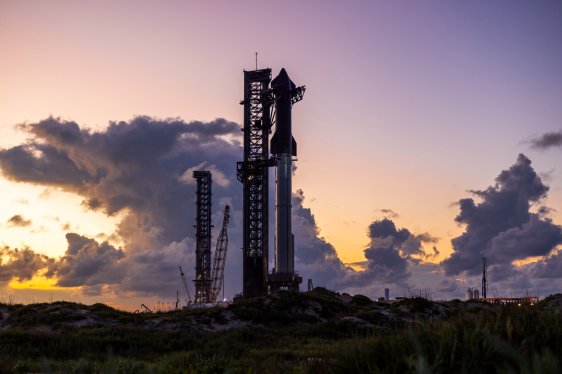Starlink Payload Deployment on Next Rocket Launch
The anticipation is building as SpaceX prepares to take its Starship test flight program to new heights. The next rocket launch, scheduled for later this month, promises to showcase a significant milestone in the development of the reusable spacecraft: payload deployment. For the first time, the Starship will carry 10 "simulator" satellites that mimic the characteristics and weight of the next-generation Starlink satellites.
What are these simulator satellites?
The 10 Starlink simulators are designed to replicate the size and weight of the operational V3 satellites that SpaceX plans to deploy in space using the Starship. These model spacecraft will travel alongside the upper stage of the rocket, which is also called Starship, and splash down in the Indian Ocean.
The linchpin for Starlink deployment
The operational version of these satellites, known as V3, are expected to be significantly heavier than the current V2 Mini spacecraft. However, thanks to Starship’s impressive payload capacity, SpaceX aims to deploy 60 V3 satellites per launch, which would add an astonishing 60 terabits per second of capacity to the Starlink network.
Comparing Starlink satellite capacities
In comparison to the V2 Mini satellites, each V3 satellite boasts more than 10 times the downlink and 24 times the uplink capacity. This substantial increase in capacity will undoubtedly enhance the overall performance of the Starlink network.
Upgrades to the Rocket
SpaceX has announced a slew of upgrades to the rocket ahead of the seventh test launch, which include:
- Improved Propulsion System: Enhancements to the propulsion system are expected to boost reliability and performance.
- Avionics Upgrades: The avionics system will receive significant improvements, contributing to the overall efficiency of the spacecraft.
- Heat Shield Enhancements: The heat shield will undergo upgrades to improve its ability to withstand extreme temperatures.
Catching the Super Heavy Booster
During this test flight, SpaceX will attempt to "catch" the Super Heavy booster for the second time. This feat was accomplished successfully during the fifth test in October, marking a significant milestone in the development of reusable spacecraft.
What’s next for Starship?
With the introduction of these upgrades and payload deployment capabilities, Starship is poised to revolutionize space travel and satellite deployment. As SpaceX continues to push the boundaries of innovation, we can expect even more exciting developments in the world of space exploration.
Stay tuned for updates on the latest advancements in space technology and innovations that will shape our future.
About the Author
Aria Alamalhodaei is a seasoned reporter covering the space and defense industries at TechCrunch. With a background in art history from the Courtauld Institute of Art, Aria brings a unique perspective to her reporting. Her work has been featured in various publications, including MIT’s Undark Magazine, The Verge, and Discover Magazine.
Related Stories
- Reusable Rocket Startup Stoke Raises $260M
- Loft Orbital Lands Fresh $170M After Logging Over $500M of Bookings
Subscribe to TechCrunch Daily News
Get the latest tech news delivered straight to your inbox every weekday and Sunday. Subscribe now to stay up-to-date on the biggest stories in the industry.
By submitting your email, you agree to our Terms and Privacy Notice.
